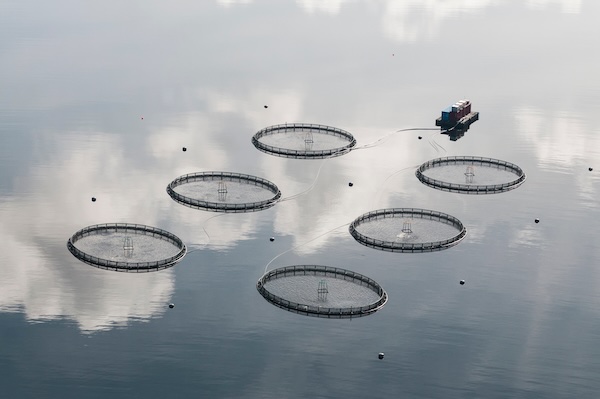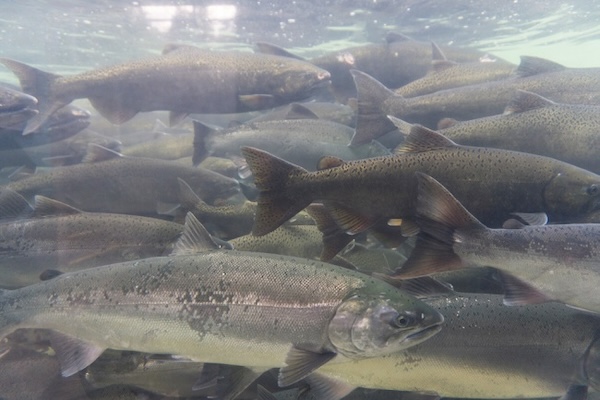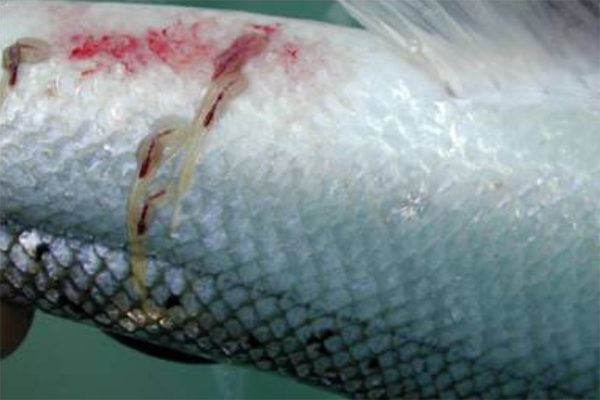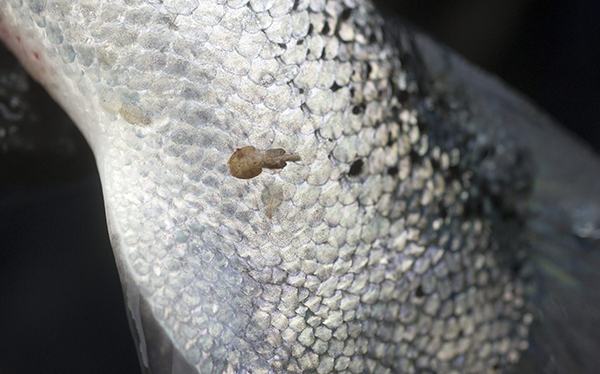SAIC provides a boost for Sustainable Aquaculture: Validating Ectoparasite Dispersal (Models)

Researchers from Scotland, Norway and the Faroe Islands are developing a new tool to test and improve predictions about how sea lice disperse in water. This tool aims to help enhance fish health by providing more accurate data.
The project, known as SAVED – Sustainable Aquaculture: Validating Ectoparasite Dispersal (Models) – recently received a funding boost from the Sustainable Aquaculture Innovation Centre (SAIC). The aim is to create a new system to validate the results of existing dispersion models, used by producers, academics and regulatory bodies.
“In recent years we have seen growing demand for data-driven practices to mitigate fish health concerns, including sea lice modeling,” said Heather Jones, CEO of SAIC. “However, valuable insight can only be based on quality data, so the tools must return dependable results that can be interpreted consistently. The benchmark could have significant benefits in terms of helping bring about proportionate regulation and enabling the future growth and development of farming.”
A variety of dispersal modeling tools are already available to help the sector manage the challenge of sea lice and inform decisions about future aquaculture sites. However, each model works with a different set of underlying assumptions, meaning they tend to return different results.
A new, standardized tool that allows for the comparison of these models and their data could help create a more reliable way to evaluate them. This could lead to better predictions about the risk sea lice pose to wild fish populations.
“Different sea lice dispersal models use varying complex mathematical techniques, but it is important to ensure that the same set of input data returns a valid result, no matter which product is used,” said Dr. Meadhbh Moriarty, senior aquatic epidemiological modeler for the Scottish government’s Marine Directorate. “To reduce the variability, we are creating a bespoke Python script that can be applied to each model and ensure it is fit for purpose.
The free online tool will be informed by several existing physical and behavioral models, which include elements such as winds and tides, the way sea lice move in the water and how they react to light exposure. Researchers will also combine data from Scotland, Norway, and the Faroe Islands to better understand the differences and uncertainties in the results from each country.
With a new standardized approach, academics, producers and regulators using any of the models currently available on the market will be able to use the online benchmark tool to provide an additional level of validation and have assurance that the output is as reliable as possible.
“Another important aspect is the development of a ‘data dictionary’ which can help to guarantee that everyone using these models is interpreting the figures in the same way,” said Moriarty. “Having input from so many partners across three of the major salmon-producing nations, each with its own governance system, is a big bonus for the project. We hope that the end result will be adopted by the aquaculture sector at scale, helping to better manage the threat of sea lice.”
Now that you've reached the end of the article ...
… please consider supporting GSA’s mission to advance responsible seafood practices through education, advocacy and third-party assurances. The Advocate aims to document the evolution of responsible seafood practices and share the expansive knowledge of our vast network of contributors.
By becoming a Global Seafood Alliance member, you’re ensuring that all of the pre-competitive work we do through member benefits, resources and events can continue. Individual membership costs just $50 a year.
Not a GSA member? Join us.
Author
Tagged With
Related Posts

Intelligence
University of Glasgow will increase its salmon and seaweed farming research
The University of Glasgow has received £3 million in funding for farmed salmon health and seaweed aquaculture research.

Intelligence
SAIC funds sea lice vaccination technology developed by Stirling and other partners
The Sustainable Aquaculture Innovation Centre (SAIC) has awarded funding to assess the efficacy of novel sea lice vaccine technology.

Health & Welfare
Scientists are developing a new ‘groundbreaking’ oral vaccine for sea lice in farmed Atlantic salmon
A new oral vaccine using reverse vaccinology and artificial intelligence may help with sea lice challenges faced by the aquaculture industry.

Health & Welfare
Gene editing eyed as a potential sea lice solution
A Nofima-led study is exploring the possibilities of using gene editing to make salmon more resistant to sea lice.



